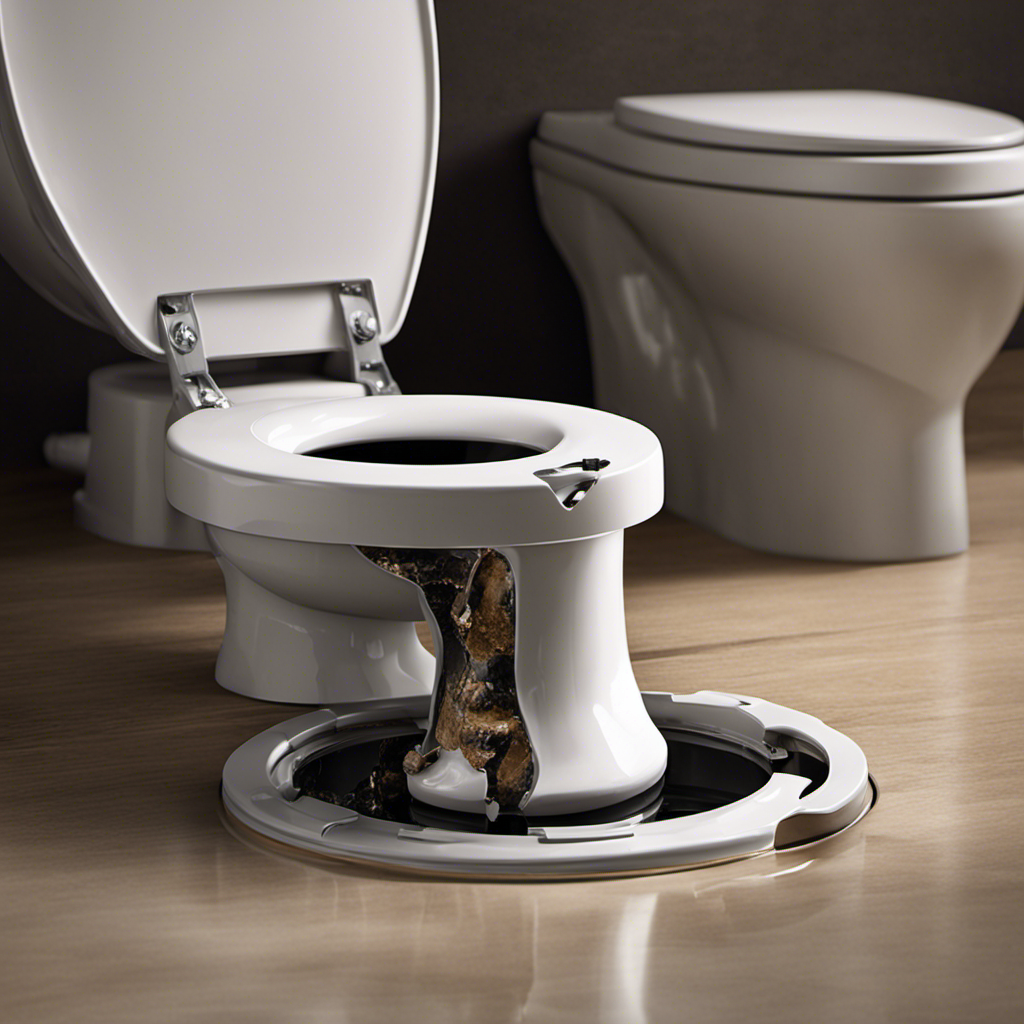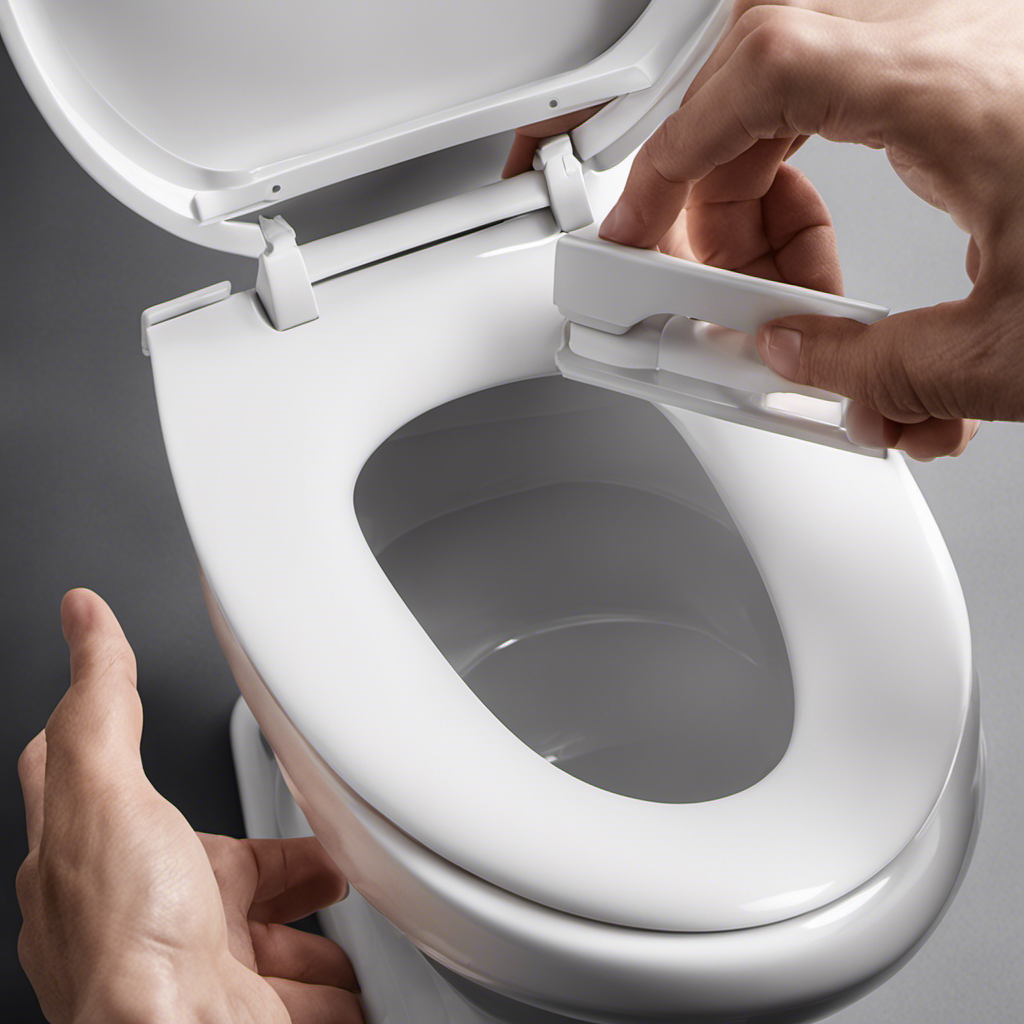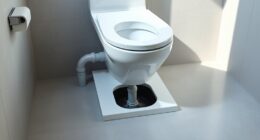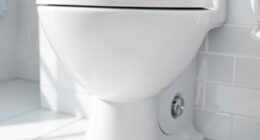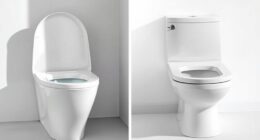When it comes to weak toilet flushes, nothing is more frustrating than a lack of power. Fortunately, there are simple solutions to this common problem.
From adjusting the float position to unclogging the drain with a plunger or toilet auger, there are several troubleshooting tips that can help improve the flushing performance.
In this article, we will delve into the various causes of weak flushes, including low-flow toilets and clogs in the drain, and provide detailed solutions to address these issues.
Get ready to say goodbye to weak flushes and hello to a powerful and efficient toilet system.
Key Takeaways
- Low-flow toilets can have weaker flushes due to their lower water usage, but there are ways to improve their flush power.
- Clogs in the toilet drain, such as from non-flushable items, can cause weak flushes. Tools like plungers, toilet augers, or liquid chemicals can be used to unclog the drain.
- A long chain in the toilet tank can prevent the flapper from staying up, leading to a weak flush. Shortening the chain can help initiate the flush valve opening.
- Clogs in the siphon jet and rim jets can weaken the flush. Cleaning these areas with a wire coat hanger and a toilet brush can help improve flush power.
Low-Flow Toilets and Flush Power
Low-flow toilets, which use 1.6 gallons per flush, can sometimes result in weaker flushes, but pressing both buttons can help increase the flush power.
Low flow toilet efficiency is a concern for some users who experience low water levels in the tank, leading to inadequate flushing. Troubleshooting low water levels in the tank can help address this issue.
One possible solution is to check the position of the tank float. If the float is too low, it may not allow enough water into the tank for a strong flush. By lifting the float or adjusting its position, the water level in the tank can be increased, improving the flush power.
This simple adjustment can enhance the efficiency of low-flow toilets and ensure a more effective flushing experience.
Dealing With Clogs in the Toilet Drain
When non-flushable items are flushed, they can cause clogs in the toilet drain. This is why regular toilet maintenance is essential to prevent such issues.
One effective tool for unclogging toilets is a plunger. By creating a seal around the drain and applying pressure, the plunger can dislodge the clog and restore proper flow. It is important to use a plunger correctly, with firm and consistent plunging motions, to maximize its effectiveness.
Additionally, regular toilet maintenance includes avoiding flushing non-flushable items such as baby wipes, tampons, Q tips, nails, and hair. These items can easily cause clogs and damage to the plumbing system.
Adjusting the Chain for Proper Flush Valve Opening
To ensure proper flush valve opening, the homeowner should adjust the length of the chain attached to the flapper in the toilet tank. By following these steps, the homeowner can troubleshoot weak toilet flushes and improve flush power:
-
Identify the chain: Locate the chain that connects the flapper to the flush handle. It is usually found in the center of the tank.
-
Check the chain length: Ensure that the chain is not too long or too short. A long chain can prevent the flapper from staying up, while a short chain may not allow the flush valve to open fully.
-
Adjust the chain length: Use pliers to detach a few links from the flapper chain if it is too long. Test the flush to see if it opens properly. Repeat the process until the chain is at the right length.
-
Test the flush: After adjusting the chain length, flush the toilet to check if the flush valve opens properly. If the flush is still weak, consider other troubleshooting methods such as adjusting the water level or float ball.
Clearing Clogs in the Siphon Jet
The homeowner can clear clogs in the siphon jet by using a wire coat hanger to break the clog and a toilet brush to clean the jet entrance.
Cleaning the siphon jet effectively is crucial for maintaining a strong and efficient flush. Over time, waste and debris can accumulate in the siphon jet, causing clogs and weakening the flush power.
By using a wire coat hanger, the homeowner can gently insert it into the jet and break up any clogs, ensuring that the water can flow freely.
Additionally, using a toilet brush to clean the entrance of the jet will help prevent future clogs by removing any residue or buildup.
Regularly cleaning the siphon jet is essential for preventing clogs and ensuring optimal toilet performance.
Maintaining Clean Rim Jets for Improved Flushing
Regularly cleaning the rim jets is essential for maintaining optimal flushing performance. Neglecting this task can lead to clogs and reduced flush power.
To keep the rim jets clean, follow these cleaning techniques and preventive measures:
-
Use a wire coat hanger: Straighten the hanger and insert it into each rim jet hole. Gently move it back and forth to break up any clogs. Repeat this process for each hole.
-
Use a toilet brush: After using the wire coat hanger, use a toilet brush to remove any small waste remnants that may have been dislodged. Scrub the entrance of the rim jets to ensure they are completely clean.
-
Regular maintenance: Make it a habit to clean the rim jets at least once a month. This will help prevent buildup and maintain optimal flushing performance.
-
Avoid flushing non-flushable items: To prevent clogs in the rim jets, avoid flushing items such as baby wipes, tampons, Q tips, nails, and hair. Dispose of these items properly to avoid any potential problems in the future.
Additional Solutions: Replacing the Fill Valve and Unclogging the Air Vent
Replacing the fill valve and unclogging the air vent are two additional options for addressing weak toilet flushes.
When it comes to replacing the fill valve, there are both pros and cons. On the positive side, replacing the fill valve can improve water flow and increase the power of the flush. It is a relatively simple task that can be done by following a few steps. However, one downside is that it requires emptying the toilet tank and detaching the old fill valve.
On the other hand, unclogging the air vent can also be an effective solution. It involves attaching a garden hose to the vent entrance and cleaning the vent pipe with water. However, it is important to note that working on the roof can be dangerous, so calling a licensed plumber may be the safest option.
Overall, both methods have their advantages and drawbacks, and the choice between them will depend on the specific situation.
Frequently Asked Questions
How Do I Know if My Toilet Has a Low-Flow Feature?
Low-flow toilets use less water per flush, typically 1.6 gallons. Pressing both buttons can increase the flush power. To increase water flow, check the position of the tank float and lift it to raise the water level.
Are There Any Specific Materials That Should Never Be Flushed Down the Toilet?
Certain materials should never be flushed down the toilet, as they can cause clogs and damage to the plumbing system. It is important to properly dispose of harmful items, such as baby wipes, tampons, Q tips, nails, and hair.
What Should I Do if the Chain on My Toilet Is Too Short?
To adjust the toilet chain, one should ensure it is not too short. A short chain prevents the flapper from staying up, hindering the flush. It is important to maintain proper water levels for a strong flush.
How Often Should I Clean the Siphon Jet in My Toilet?
To keep the siphon jet in a toilet clean and functioning properly, it is recommended to clean it at least once every three months. This will help prevent clogs and maintain a strong flush.
Can I Replace the Fill Valve in My Toilet Myself, or Do I Need to Hire a Professional?
Yes, the fill valve in a toilet can be replaced by oneself. However, if unsure or uncomfortable with DIY, it is recommended to hire a professional for troubleshooting weak toilet flushes and other common toilet problems. Proper toilet maintenance is key to optimizing toilet performance.
Conclusion
In conclusion, troubleshooting weak toilet flushes requires a combination of knowledge and precision. By understanding the causes of weak flushes, such as clogs and low water levels, and implementing the suggested solutions, one can restore the power and efficiency of their toilet.
From adjusting the float position to unclogging the drain and cleaning the siphon and rim jets, these steps will ensure a satisfying flush.
Remember, a toilet with a weak flush is like a broken promise, but with these troubleshooting tips, you can make it right again.



